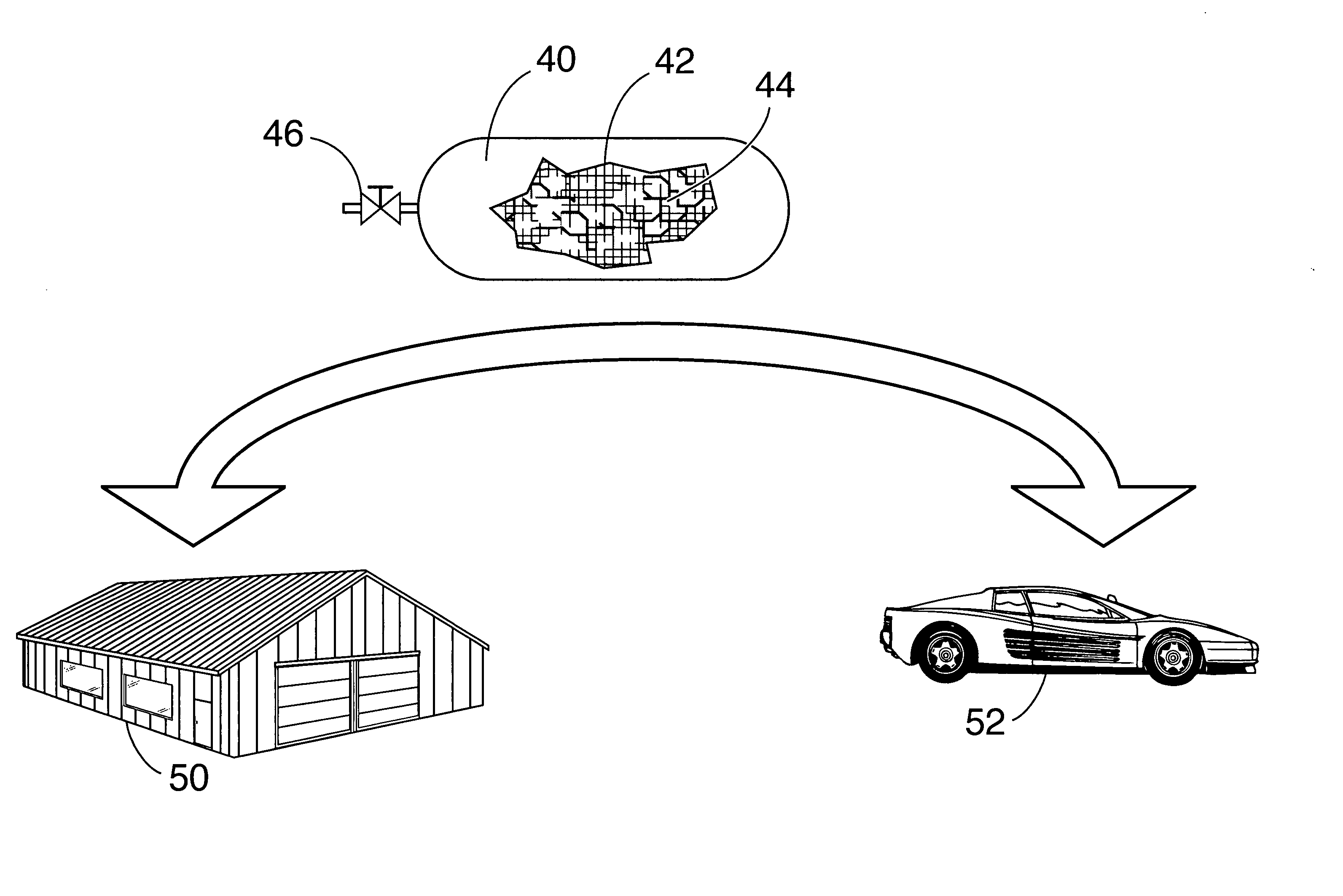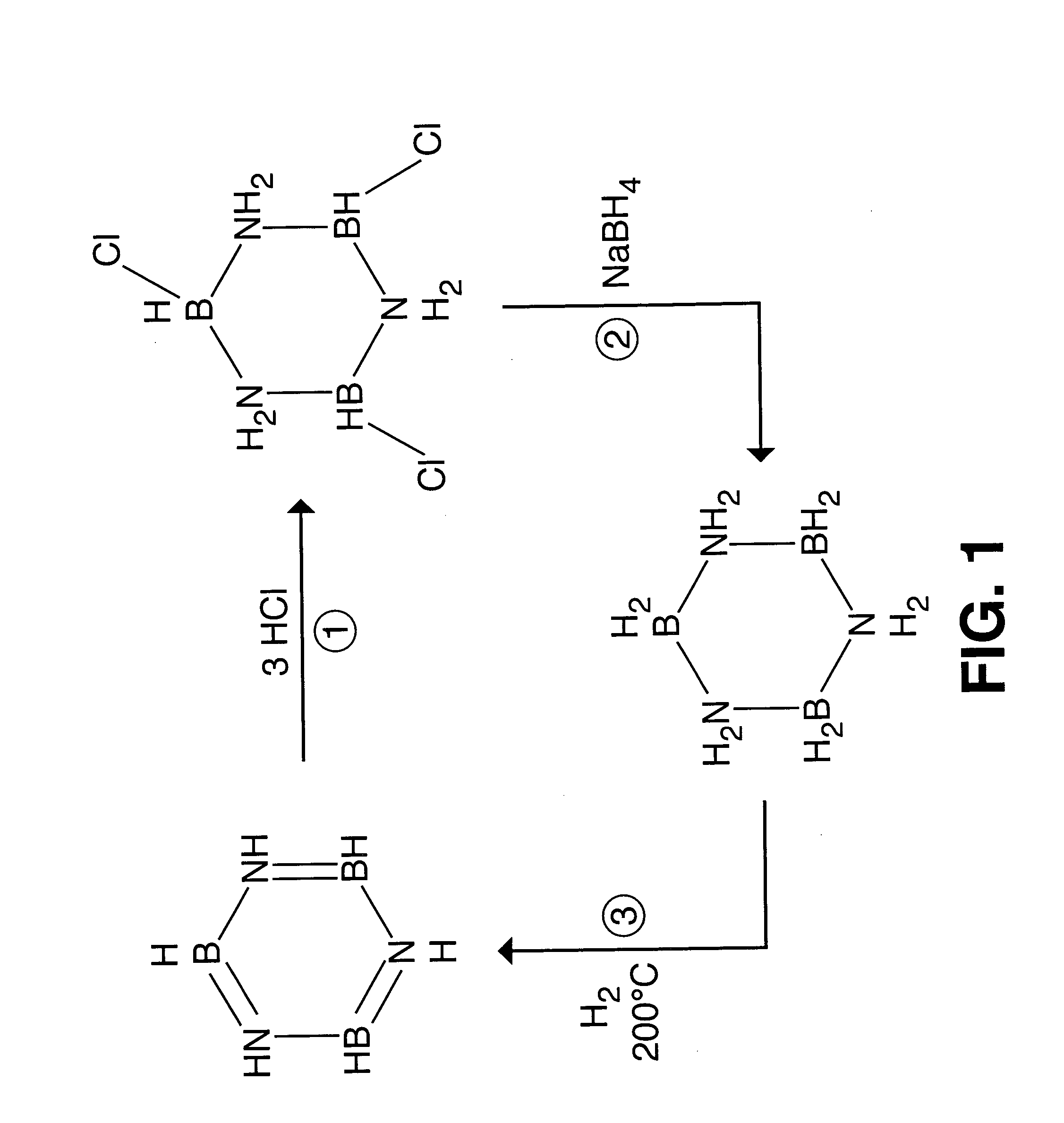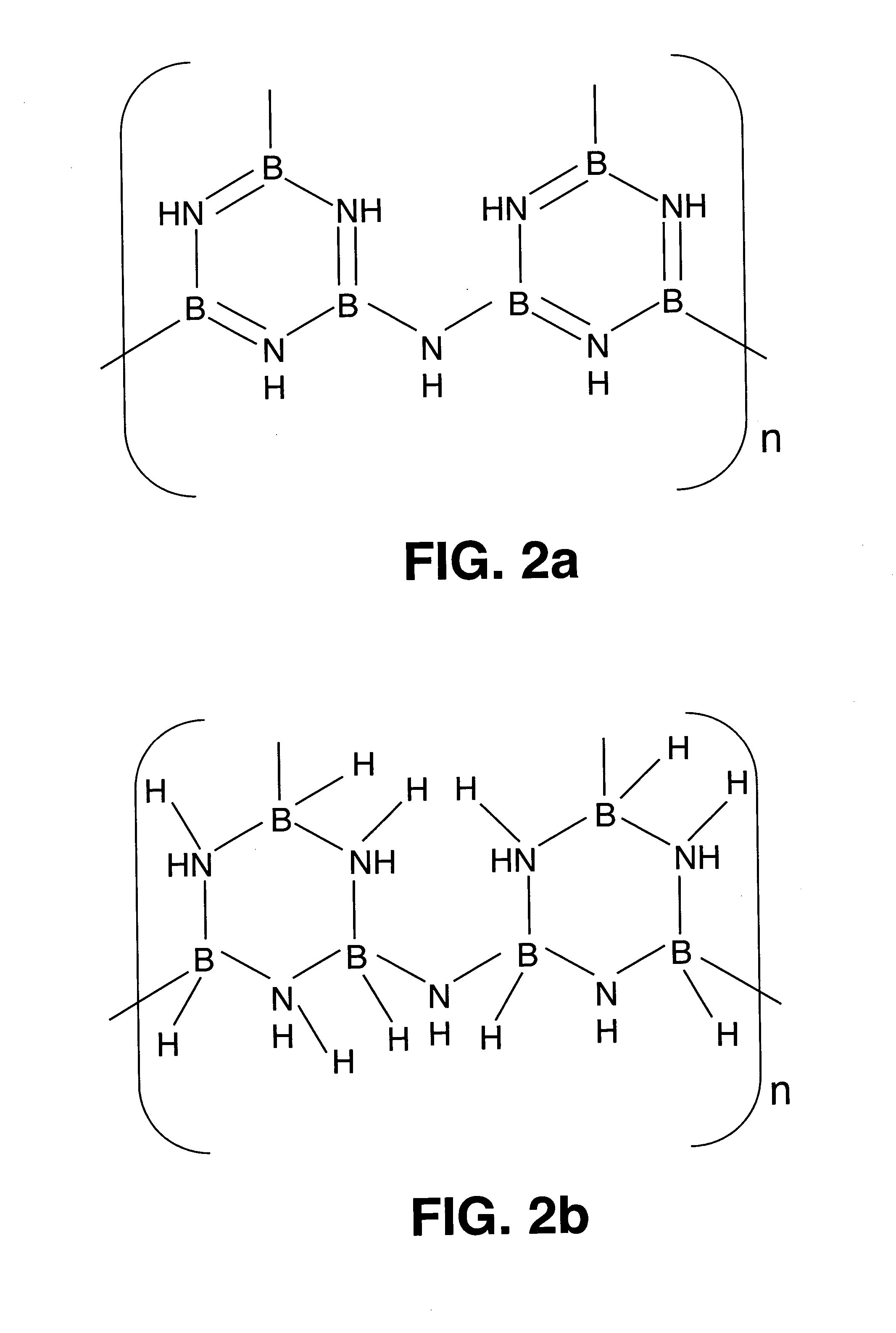Borazine-boron nitride hybrid hydrogen storage system
a hydrogen storage system and boron nitride technology, applied in the field of hybrid hydrogen storage systems, can solve the problems of unacceptably low efficiency, inconvenient storage of hydrogen in liquid form at very low temperatures, and limited shelf life, so as to achieve safe, efficient storage, and controllable release of hydrogen.
- Summary
- Abstract
- Description
- Claims
- Application Information
AI Technical Summary
Benefits of technology
Problems solved by technology
Method used
Image
Examples
example i
[0031] A mixture of two isomers, 1(e),3(e),5(e)-trimethylcycloborazane and 1(e),3(e),5(a)-trimethylcycloborazane was prepared.
[0032] The decomposition temperature of trimethylcycloborazane was determined to be 250° C. at atmospheric pressure.
[CH3N(H)BH2]3→[CH3NBH]3 +3H2
[0033] The model compound released 4.49% H2 at 80° C. and additional 4.7% H2 at 260° C. (w / w≈v / v since density is ˜1). The model compound was dissolved in organic solvents (such as, but not limited to, benzene, tetrahydrofuran etc.) and impregnated into high-surface-area BN.
[0034] Although any BN particulates can be used, high-surface-area BN is preferred for use in carrying out the present invention because the available surface area is directly proportional to the amount of borazane and / or borazine that can be loaded (sorbed) thereon. Although lesser loadings are operable in carrying out the present invention, the preferred loading of borazane and / or borazine is the maximum amount of borazane and / or borazine th...
example ii
[0035] Spherical, high-surface-area BN particles were prepared in two steps in accordance with U.S. Pat. No. 6,348,179 issued on Feb. 19, 2002 to Paine, et al. In the first step, a conventional aerosol reactor was used with commercially available trialkylborate compounds and ammonia to form BNxOy spherical particles with oxygen levels less than 8 wt %. Brief calcination of the particles in NH3 gave smooth spherical morphology particles of BN.
[0036] In some embodiments of the present invention, at least one catalyst can be added in an amount in the range of about 0.05 wt % to about 1%, preferably about 0.5% to about 0.8%. Too little catalyst can be ineffective, and too much catalyst would not be cost-effective.
[0037] Catalytic dehydrogenation reduces the temperature of dehydrogenation and the complexity associated with chemical hydrogenation protocol. The catalyzed dehydrogenative coupling of >B—H bond with >N—H bond (see U.S. Pat. No. 4,801,439 to Blum, et al.) can be adapted for ...
PUM
 Login to View More
Login to View More Abstract
Description
Claims
Application Information
 Login to View More
Login to View More - R&D
- Intellectual Property
- Life Sciences
- Materials
- Tech Scout
- Unparalleled Data Quality
- Higher Quality Content
- 60% Fewer Hallucinations
Browse by: Latest US Patents, China's latest patents, Technical Efficacy Thesaurus, Application Domain, Technology Topic, Popular Technical Reports.
© 2025 PatSnap. All rights reserved.Legal|Privacy policy|Modern Slavery Act Transparency Statement|Sitemap|About US| Contact US: help@patsnap.com



